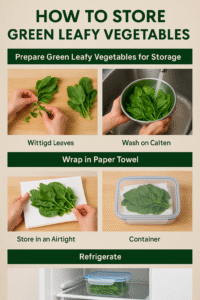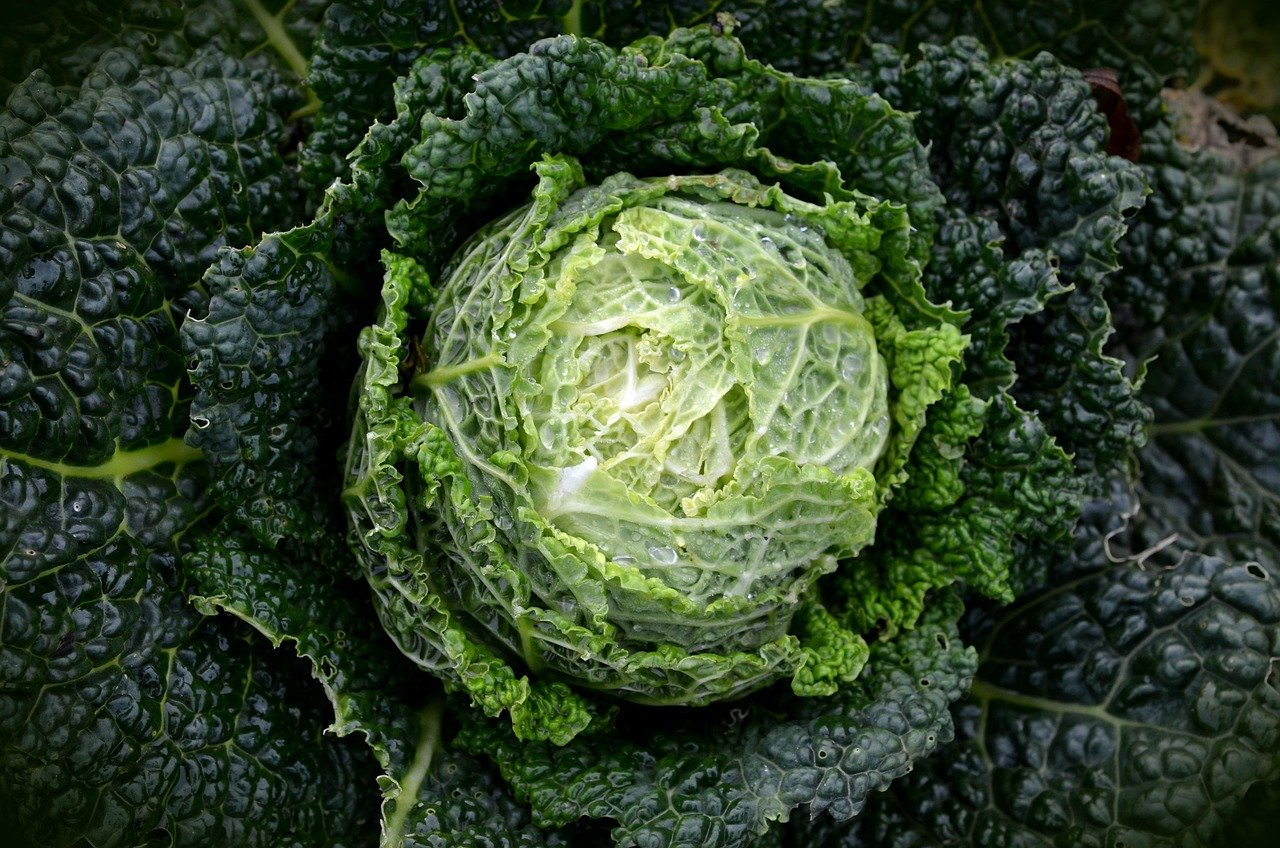How to Store Green Leafy Vegetables
How to Store Green Leafy Vegetables for Maximum Freshness
Green leafy vegetables are an essential part of a healthy diet. They are rich in vitamins, minerals, and fiber, making them beneficial for digestion, immunity, and overall well-being. However, one common challenge many people face is how to store green leafy vegetables to keep them fresh for longer. Improper storage can lead to wilting, spoilage, and nutrient loss. This article provides a complete guide on how to store green leafy vegetables at home, ensuring they stay crisp, green, and nutritious for as long as possible.
Why Proper Storage of Green Leafy Vegetables is Important
Green leafy vegetables, such as spinach, lettuce, coriander, mint, fenugreek, kale, and parsley, have high water content, which makes them prone to wilting and spoilage if not stored correctly. They are delicate and sensitive to temperature and moisture. If exposed to excessive moisture, they can rot quickly. On the other hand, if they become too dry, they lose their crispness and nutrients. Therefore, learning how to store green leafy vegetables properly not only prevents food wastage but also helps retain their nutritional value, flavor, and freshness.
How to Prepare Green Leafy Vegetables for Storage
Before you store green leafy vegetables, it is important to prepare them the right way. First, check the leaves for any yellow, wilted, or damaged parts and remove them. These spoiled leaves can affect the freshness of the rest of the bunch. Next, wash the leafy greens thoroughly under cold running water to remove dirt, pesticides, and insects. After washing, gently pat them dry with a clean kitchen towel or use a salad spinner to remove excess moisture. Do not store wet leafy vegetables, as excess moisture promotes mold growth and spoilage.
Best Ways to Store Green Leafy Vegetables in the Refrigerator
The refrigerator is the ideal place to store green leafy vegetables for an extended period. After cleaning and drying the greens, wrap them in a paper towel or clean cotton cloth. This helps absorb any remaining moisture and keeps the leaves crisp. Then, place the wrapped greens in an airtight container or zip-lock bag. Make sure to leave a little space for air circulation inside the container, as completely sealed environments can encourage mold growth.

Store the container in the vegetable crisper drawer of your refrigerator, which is designed to maintain the right humidity for vegetables. When stored properly, most green leafy vegetables can last for up to a week or even longer, depending on the type. For example, spinach, lettuce, and kale usually stay fresh for 5 to 7 days, while hardy greens like cabbage can last up to two weeks.
How to Store Herbs and Delicate Leafy Greens
Herbs like coriander, mint, parsley, and dill are also considered green leafy vegetables but are more delicate and prone to wilting. To store them effectively, treat them like fresh flowers. Trim the ends of the stems, place them in a glass jar filled with water, and loosely cover them with a plastic bag. Place the jar in the refrigerator. This method keeps herbs fresh and green for up to 10 days.
Alternatively, herbs can be wrapped in a damp paper towel and stored in an airtight container in the refrigerator. Ensure the towel is not too wet, as excessive moisture can cause rot.
How to Store Green Leafy Vegetables Without a Refrigerator
If you do not have access to a refrigerator, you can still store green leafy vegetables for a short period by keeping them in a cool, shaded area of your kitchen. First, wash and dry the greens thoroughly. Then, wrap them loosely in a damp cotton cloth or newspaper and keep them in a basket or container with ventilation. Avoid direct sunlight and high humidity areas, as they can accelerate spoilage.
For leafy herbs, you can keep them in a glass of water on the kitchen counter, similar to storing them in the refrigerator. Change the water daily to maintain freshness. However, without refrigeration, most green leafy vegetables will stay fresh for only 1 to 2 days, so it is best to consume them as soon as possible.
How to Store Cooked Green Leafy Vegetables

Sometimes, you may have leftover cooked green leafy vegetables like spinach curry, sautéed kale, or stir-fried fenugreek. To store them safely, allow the cooked greens to cool completely before transferring them to an airtight container. Place the container in the refrigerator within two hours of cooking to prevent bacterial growth. Cooked leafy vegetables can be stored in the refrigerator for up to 3 days. Reheat thoroughly before consumption to maintain food safety.
For longer storage, cooked leafy greens can be frozen. Divide them into meal-sized portions, place them in freezer-safe bags or containers, and store them in the freezer. They can last for up to 3 months when frozen, but the texture may change slightly upon thawing.
How to Store Green Leafy Vegetables in the Freezer
Freezing is a good option for preserving green leafy vegetables for long-term use, especially when you have a large quantity that you cannot consume quickly. To freeze greens, first wash and blanch them. Blanching involves briefly boiling the greens for 1 to 2 minutes, followed by immediate cooling in ice water. This process helps retain the color, texture, and nutrients of the greens while killing harmful bacteria.
After blanching, drain the greens and pat them dry. Pack them into freezer-safe bags or containers, removing as much air as possible to prevent freezer burn. Label the bags with the date of freezing for easy tracking. Frozen green leafy vegetables can be stored for up to 6 months and used in soups, stews, smoothies, or cooked dishes.
Common Mistakes to Avoid When Storing Green Leafy Vegetables
Many people unintentionally reduce the shelf life of their green leafy vegetables due to common storage mistakes. Storing wet greens in plastic bags without ventilation often leads to quick spoilage. Similarly, keeping greens near ethylene-producing fruits like bananas, apples, or tomatoes can cause them to wilt prematurely. Overcrowding the vegetable drawer is another mistake, as it limits airflow and accelerates spoilage. Always ensure your greens have space, proper wrapping, and the right environment for optimal freshness.
Benefits of Properly Stored Green Leafy Vegetables
When you store green leafy vegetables correctly, you not only reduce food waste but also enjoy maximum nutritional benefits. Fresh greens are packed with vitamins A, C, K, iron, calcium, and antioxidants. They contribute to better digestion, healthy skin, strong bones, and improved immunity. Proper storage helps maintain these nutrients, preserves the crisp texture, and enhances the flavor of your meals.

How long can green leafy vegetables last in the refrigerator?
When stored properly in the refrigerator using paper towels and airtight containers, most green leafy vegetables stay fresh for 5 to 7 days. Hardy greens like cabbage can last up to two weeks, while delicate herbs may last around 10 days.
Should I wash green leafy vegetables before storing them?
It is recommended to wash green leafy vegetables before storing them, but ensure they are completely dry. Excess moisture promotes rot, so always pat the leaves dry with a towel or use a salad spinner before refrigeration.
What is the best way to store spinach?
“To store spinach, wrap the dry leaves in a paper towel, place them in an airtight container or zip-lock bag, and keep them in the refrigerator’s vegetable drawer. This method keeps spinach fresh for up to a week.”
Can I freeze green leafy vegetables without blanching?
You should avoid freezing green leafy vegetables without blanching, as it causes texture loss and nutrient degradation. Blanching preserves their color, texture, and nutritional value, making the greens ideal for freezing
How to store coriander and mint leaves for longer freshness?
Coriander and mint leaves stay fresh for longer when placed in a jar with water, like a bouquet, and loosely covered with a plastic bag. Alternatively, wrap them in a damp paper towel and store them in an airtight container in the refrigerator.

Why do my leafy greens wilt quickly even when stored in the fridge?
Leafy greens wilt quickly if stored wet, overcrowded, or near ethylene-producing fruits. Keep the greens dry, allow enough space for airflow, and store them away from fruits that accelerate spoilage.
Can I store cooked green leafy vegetables for later use?
Yes, cooked green leafy vegetables can be stored in the refrigerator for up to 3 days in an airtight container. For longer storage, freeze them in small portions, which can last up to 3 months.
Is newspaper safe for storing leafy vegetables?
Wrapping leafy vegetables in newspaper is a traditional method for short-term storage without a refrigerator. However, ensure the newspaper is clean and free from ink smudges that might transfer to the food.
Conclusion
Learning how to store green leafy vegetables properly ensures you enjoy their freshness, taste, and nutritional benefits for longer. Whether using the refrigerator, freezer, or traditional methods, proper preparation, moisture control, and storage techniques make a significant difference. With these simple yet effective tips, you can reduce food wastage, save money, and always have fresh greens ready for your meals.
